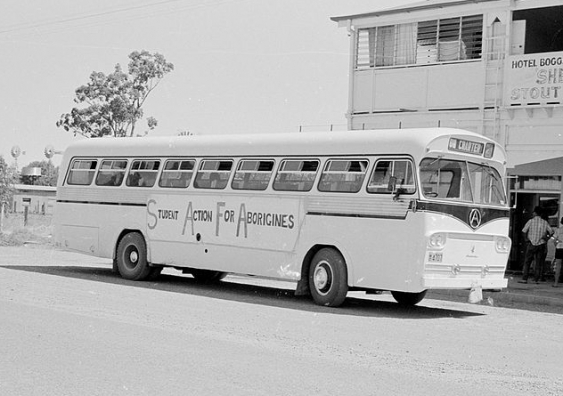The global COVID-19 pandemic has propelled ‘Big Data’ into the national spotlight. In real-time, the public is being exposed to population-level data at an unprecedented rate and detail.
For UNSW Scientia Fellow Dr Kalinda Griffiths – a Yawuru woman and epidemiologist at the UNSW Centre for Big Data Research – this has brought into focus the critical role data plays in health, not just with the COVID-19 pandemic, “but also for other health issues, and particularly for Aboriginal and Torres Strait Islander communities”.
“Data is critical to understand how this disease is impacting communities,” Dr Griffiths says.
“We know that data is the central source of information around any sort of epidemic or pandemic. But when we start to break it down by different population groups, that’s where it gets more complicated.
“This is where it becomes important to have identification and enhancement processes for Aboriginal and Torres Strait Islander peoples within these datasets. We need to be seen.”

Dr Kalinda Griffiths is a UNSW Scientia Fellow at the Centre for Big Data Research in Health, working in Sydney and Darwin.
Timely and accurate data is critical to understanding the problem, Dr Griffiths says; it paints a clear picture of “what we’re dealing with and what we can do about it”. This is essential for being able to allocate the necessary resources to support Indigenous communities.
Community preparedness, reducing the risk of an outbreak and highlighting any gaps in service capacity – particularly for remote communities – are some key areas that data can give insight.
“[Indigenous communities] have a pretty clear idea of what's occurring in their own backyard,” Dr Griffiths says. But data allows for a space to be able to demand “the resources that are needed”.
“Data provides not just information about [COVID-19] cases. It also provides information around how many people are coming in to get tested…about how many services are available to people, and how many beds are available within different regions and community areas.”
It's then a matter of what services are available to treat people if the disease does present in communities, Dr Griffiths says; it’s about capacity and readiness.
“This has to do with preparedness – we don’t have a case we know of yet [in remote Indigenous communities], and I hope communities don’t have to face it – but if we don’t have timely, accurate data and information this can impact on service access and delivery.”
That is why it’s important for Aboriginal and Torres Strait Islander peoples to identify within services if they have symptoms, are seeking testing or return a positive test, Dr Griffiths says.
“If this impacts our communities, we need to understand the distribution of the disease.”
Coronavirus could have a “devastating” impact on remote communities
Aboriginal and Torres Strait Islander remote communities could see significant and devastating impacts if an outbreak occurs in these areas, Dr Griffiths says.
This is due to several factors, including higher rates of chronic conditions in communities, living arrangements and limited access to health care.
“We're talking about people grappling with different environmental and living arrangements than other regions. We are speaking about people who may be living in overcrowded houses or places where there might be communal approaches to living just generally.”
This means that disease transmission, within these communities, would likely be quicker and more widespread.
Coupled with underlying high rates of other health issues, including comorbidities, and reduced access to sufficient medical care, remote Aboriginal communities are vulnerable to COVID-19, Dr Griffiths says.
“If you are in a remote community with a very limited clinical staff, questions arise as to the capabilities and services available in the event an outbreak occurs – so there need to be resources available in these instances.”
Cultural and community autonomy is essential
A national Indigenous advisory taskforce has been set-up by the federal government to advise about responses to the COVID-19 pandemic for Aboriginal and Torres Strait Islander communities and people. This includes developing an Emergency Response Plan for Indigenous communities.
After urgent calls from the taskforce – led by the CEO of the National Aboriginal Community Controlled Health Organisation (NACCHO), Pat Turner – non-essential travel has been restricted to several remote Aboriginal communities.
Ms Turner says more needs to be done, however.
In an interview with ABC Radio, Ms Turner said that if COVID-19 hits remote Indigenous communities it would be “catastrophic” and more support, including from the army, is needed.

Community autonomy is important with support in the fight against COVID-19.
“There is support coming in for remote communities from the government, including resources and money,” Dr Griffiths says, “to ensure that their disease preparedness plans are ready to roll out as soon as possible.
“It’s important that each community has autonomy and control of priority and distribution of resources and assistance, however.”
This is because each Indigenous community has different resources in play, Dr Griffiths says, different infrastructures and staffing too.
“Cultural autonomy also comes into it. Different communities will have different needs and those depend upon different norms as well.”
“What's required within those communities should be at the discretion, decision making and governance processes of the leaders within those communities. Again, governance structures across different community groups are extremely varied.
“You can’t just have a blanket approach.”
Indigenous data sovereignty and ownership
Dr Griffiths recognises and understands the apprehension and concern around data collection and analysis in Aboriginal and Torres Strait Islander communities.
“There are tensions that arise with data and particularly around reporting processes in Australia and Aboriginal and Torres Strait Islander peoples,” she says.
“This comes down to the fact that we had to fight for the right to be counted.”
That right came from a moral imperative by the Australian public, Dr Griffiths says. A moral imperative that arose with the successful ‘Yes’ vote in the 1967 referendum to have Aboriginal and Torres Strait Islander people counted in the national census.
“Even still – we had to ask to be counted. This brings its own tensions – discussions around power differentials and hegemony.”
These tensions arise, Dr Griffiths says, because it was still a “colonial sanctioned form of recognition… of the government giving Aboriginal and Torres Strait Islander people permission to be counted.”

Many view the Freedom Ride, led by Charlie Perkins in 1965, as playing an important role in leading to the successful 'Yes' vote in the historic 1967 referendum.
This means discussions need to start, she says, about who owns data relating to Aboriginal and Torres Strait Islander people and communities; who has the right to decide what that data can be used for; and discussions should explore how to manage whole population-level data when there are so many First Nations groups, relational networks and clans.
“Data is power. And it opens up the space – and we're seeing it with COVID-19 at a very fast pace – to be able to distribute resources as necessary to those communities and people that need it the most,” Dr Griffiths says.
“There has always been a push for non-Indigenous people to decide what is done with data relating to Indigenous communities and peoples, and in how data is measured. But this needs to change.
“Data governance plays a huge role, as well as data capacity building within the community. One thing that we don't know, though, is what people think data governance means.”
Work is being done to outline this, through networks, committees and institutions, such as the Indigenous Data Network, which Dr Griffiths is a steering committee member of.
“Once there is improved Indigenous data governance and ownership, we will likely see more timely and accurate data. Which can be vital in circumstances like what we now face with COVID-19.”
“These are complex problems and there’s no easy fix. But the needle to beginning to move.”
